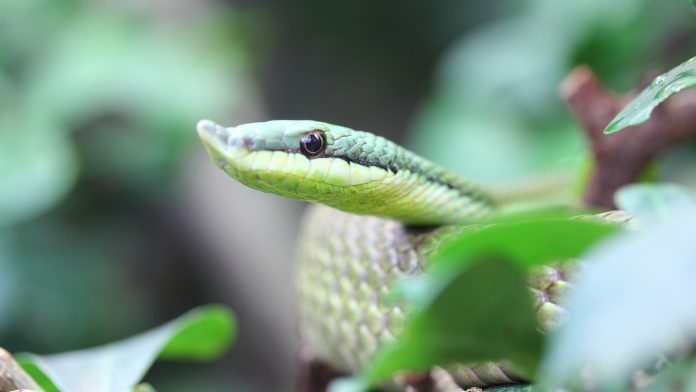A study at the University of Virginia and Virginia Tech aims to optimise future robots by exploring the movement mechanisms of flying snakes.
Animals inspiring robot design is not a new phenomenon, as robots have commonly been developed to mimic animal movements such as walking and swimming. Now, US researchers are investigating how to design robots that imitate the gliding motion performed by flying snakes.
The study, ‘Computational analysis of vortex dynamics and aerodynamic performance in flying-snake-like gliding flight with horizontal undulation,’ is published in Physics of Fluids.
Understanding the mechanics of flying snakes
The investigation analysed the lift production mechanism of flying snakes that undulate side-to-side as they travel from the tops of trees to the ground to evade predators or move efficiently. This undulation enables flying snakes to glide for great distances – as far as 25 metres from a 15-metre height.
To work out how these undulations allow the snakes to lift, the team designed a computational model using data acquired from high-speed videos of flying snakes. A vital aspect of this model is the snake’s cross-sectional-shaped body, which looks like an elongated frisbee or flying disc.
This cross-sectional shape is essential for allowing flying snakes to glide so effectively. For example, the spinning disc in a frisbee increases the air pressure below the disc and suction on its top, which elevates the disc.
To recreate a similar pressure differential across its body, the flying snake undulates side to side, creating a low-pressure region above its back and a high-pressure area below its abdomen, which helps the snake glide through the air.
Haibo Dong, the author of the study from the University of Virginia, commented: “The snake’s horizontal undulation creates a series of major vortex structures, including leading edge vortices (LEV) and trailing edge vortices (TEV). The formation and development of the LEV on the dorsal, or back, the surface of the snake body plays an important role in producing lift.”
Essential findings for improving robot design
LEVs form near the head and move toward the back of the snake’s body. The researchers discovered that LEVs hold for longer intervals at the curves in the snake’s body before being shed and are formed during undulations. LEVs are key to understanding the lift mechanism.
The investigators explore a range of features, including the angle of attack the flying snakes utilise with the oncoming airflow and undulation frequency, to find out the important factors for producing glide. They revealed that flying snakes typically undulate one to two times per second and that more rapid undulation decreases aerodynamic performance.
Dong explained: “The general trend we see is that a frequency increase leads to instability in the vortex structure, causing some vortex tubes to spin. The spinning vortex tubes tend to detach from the surface, leading to a decrease in lift.”
The team is confident their research will help to pioneer a more optimal design for gliding snake robots.









